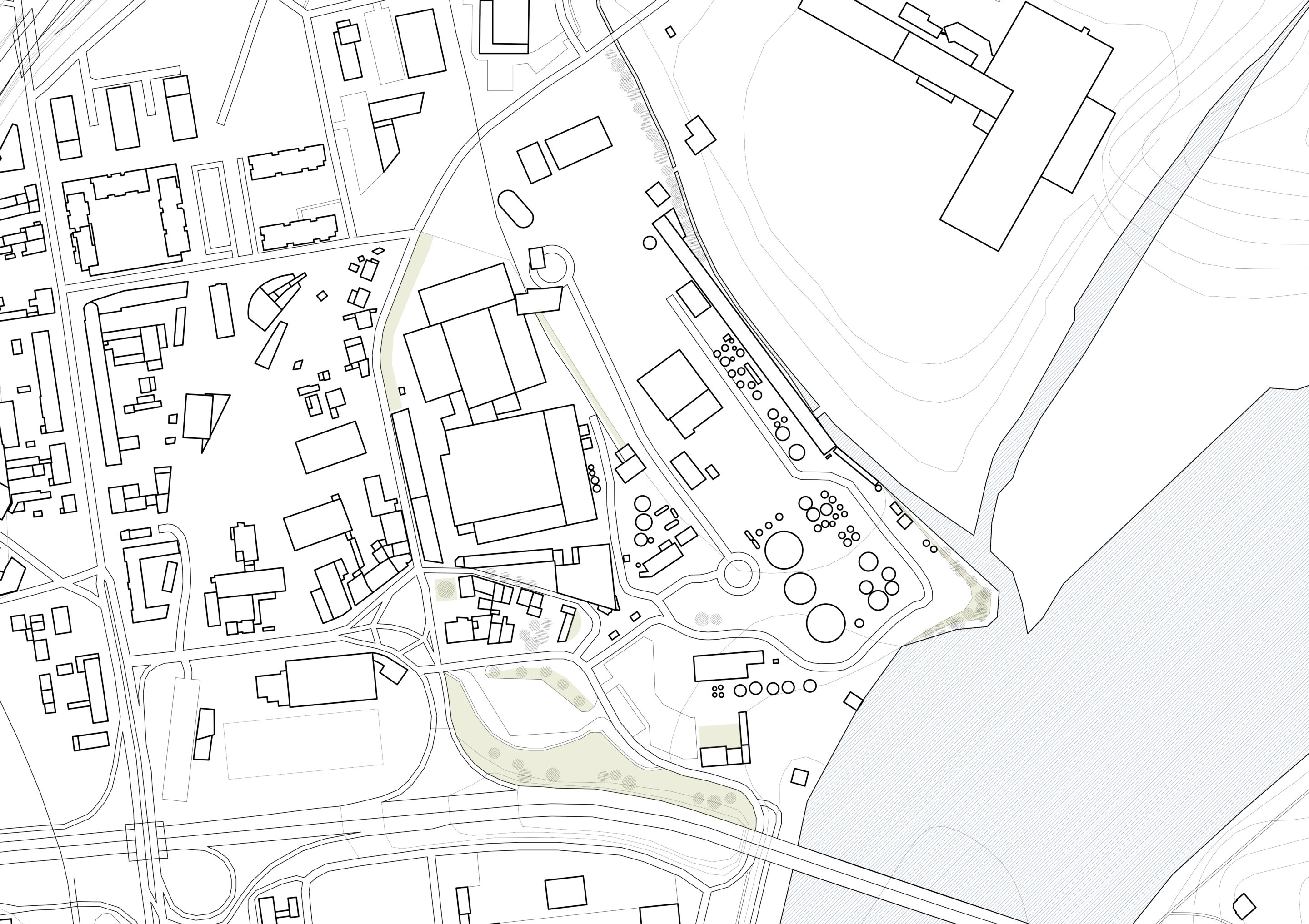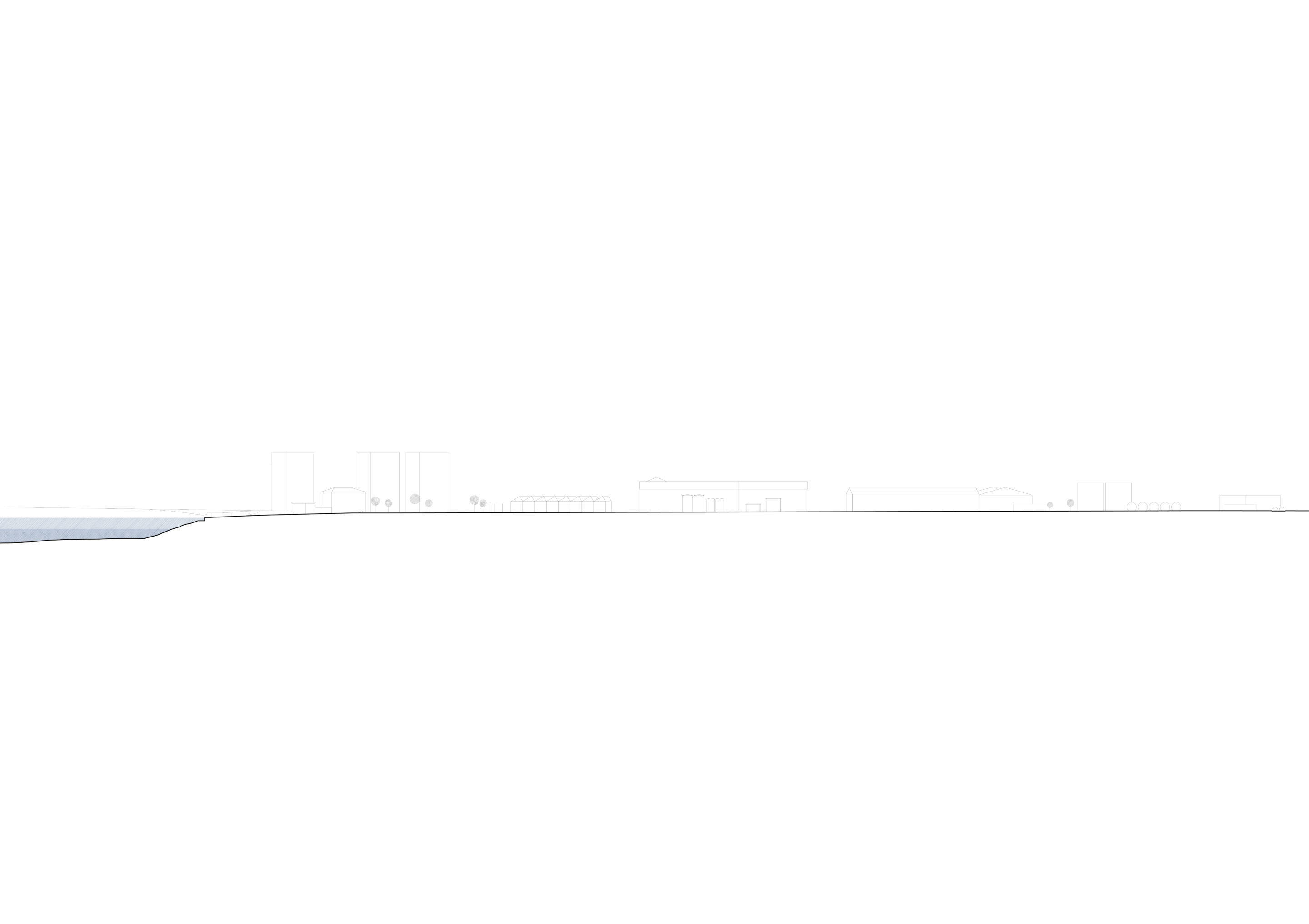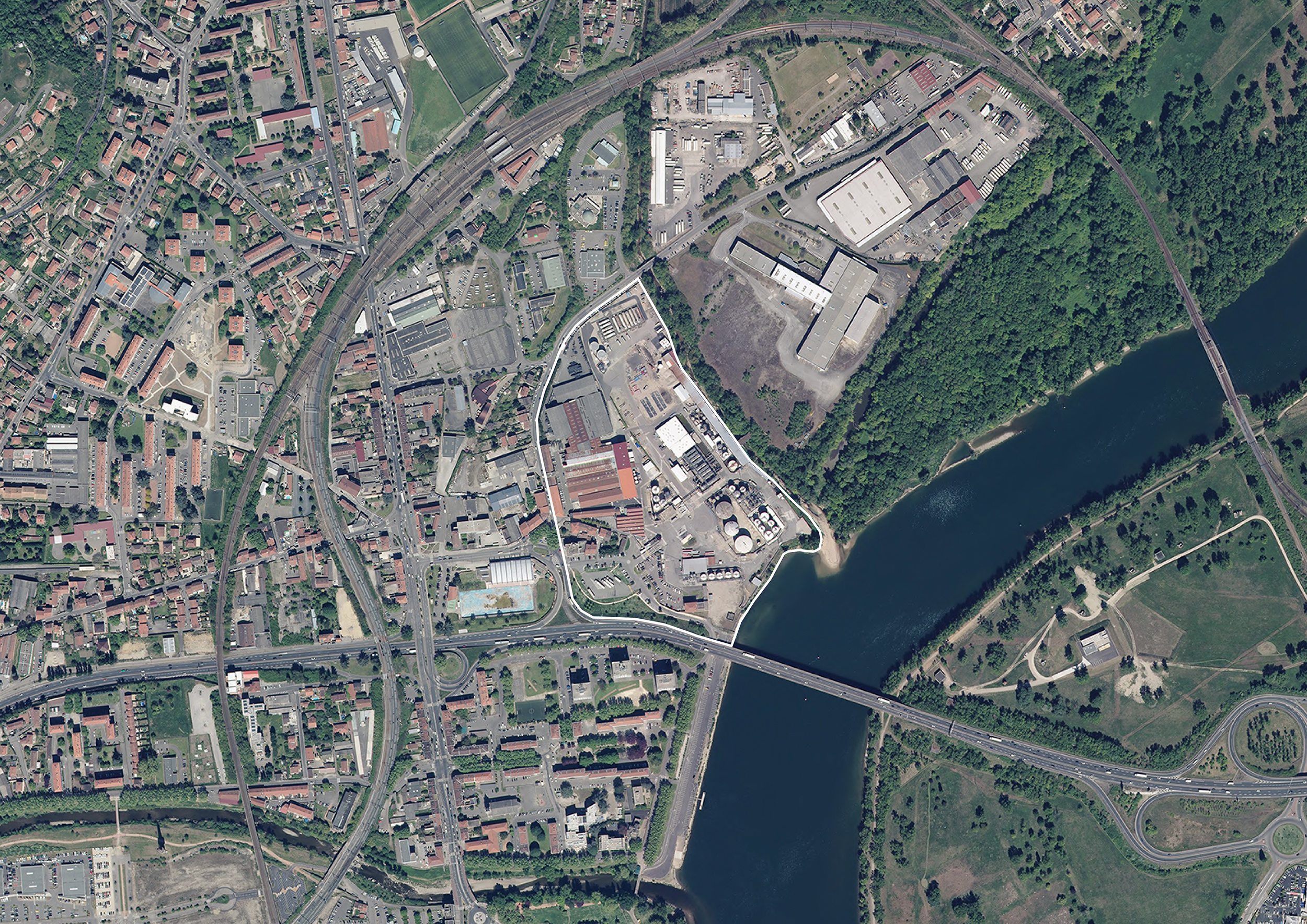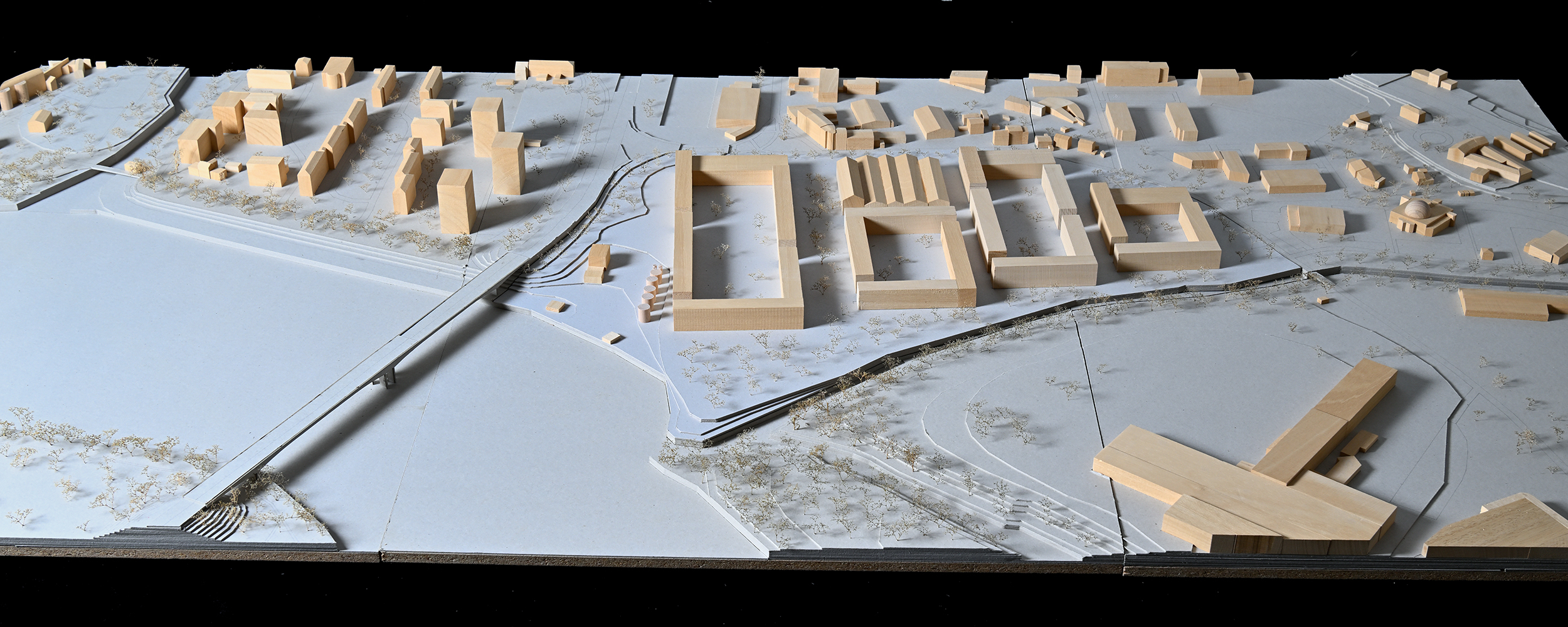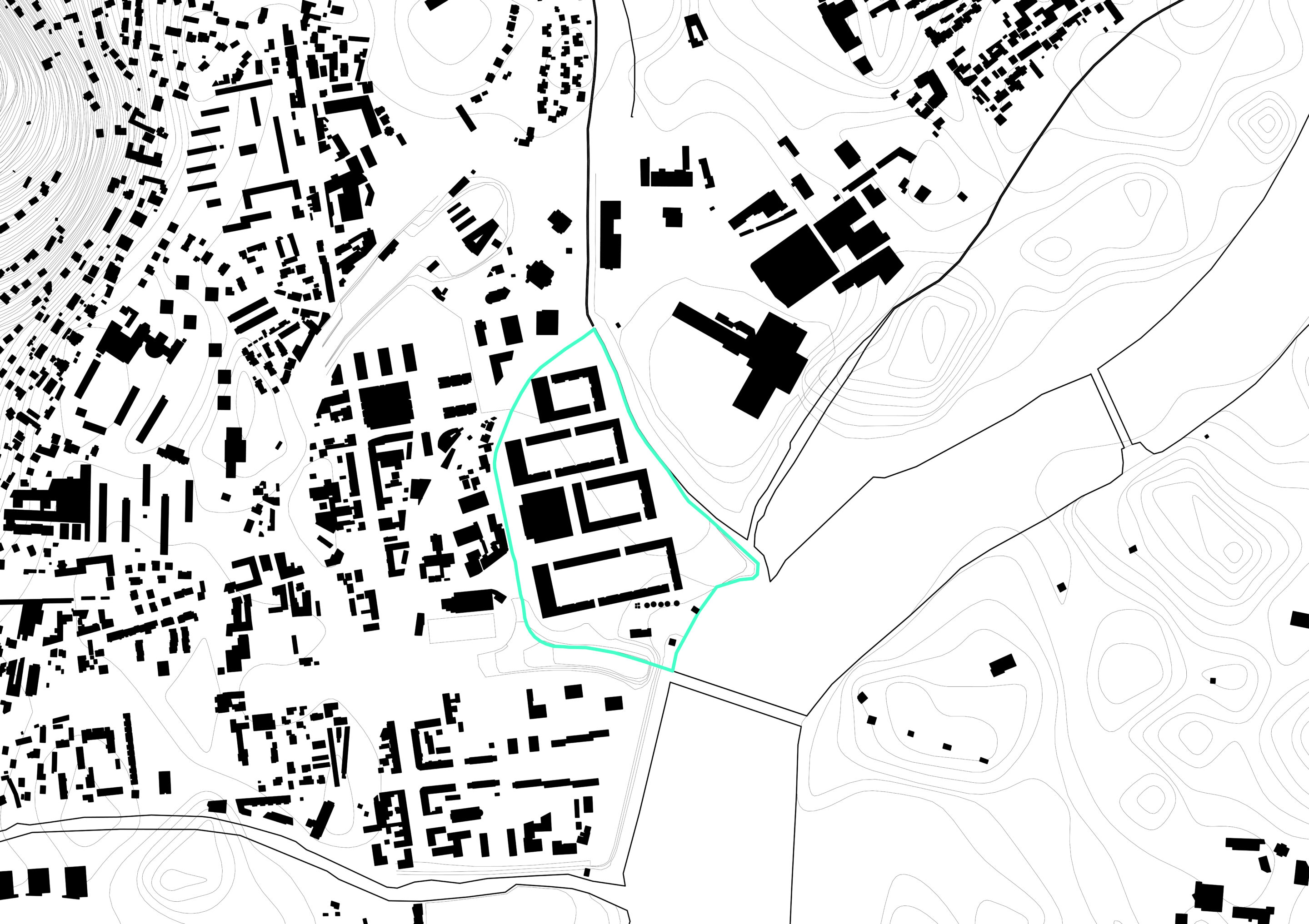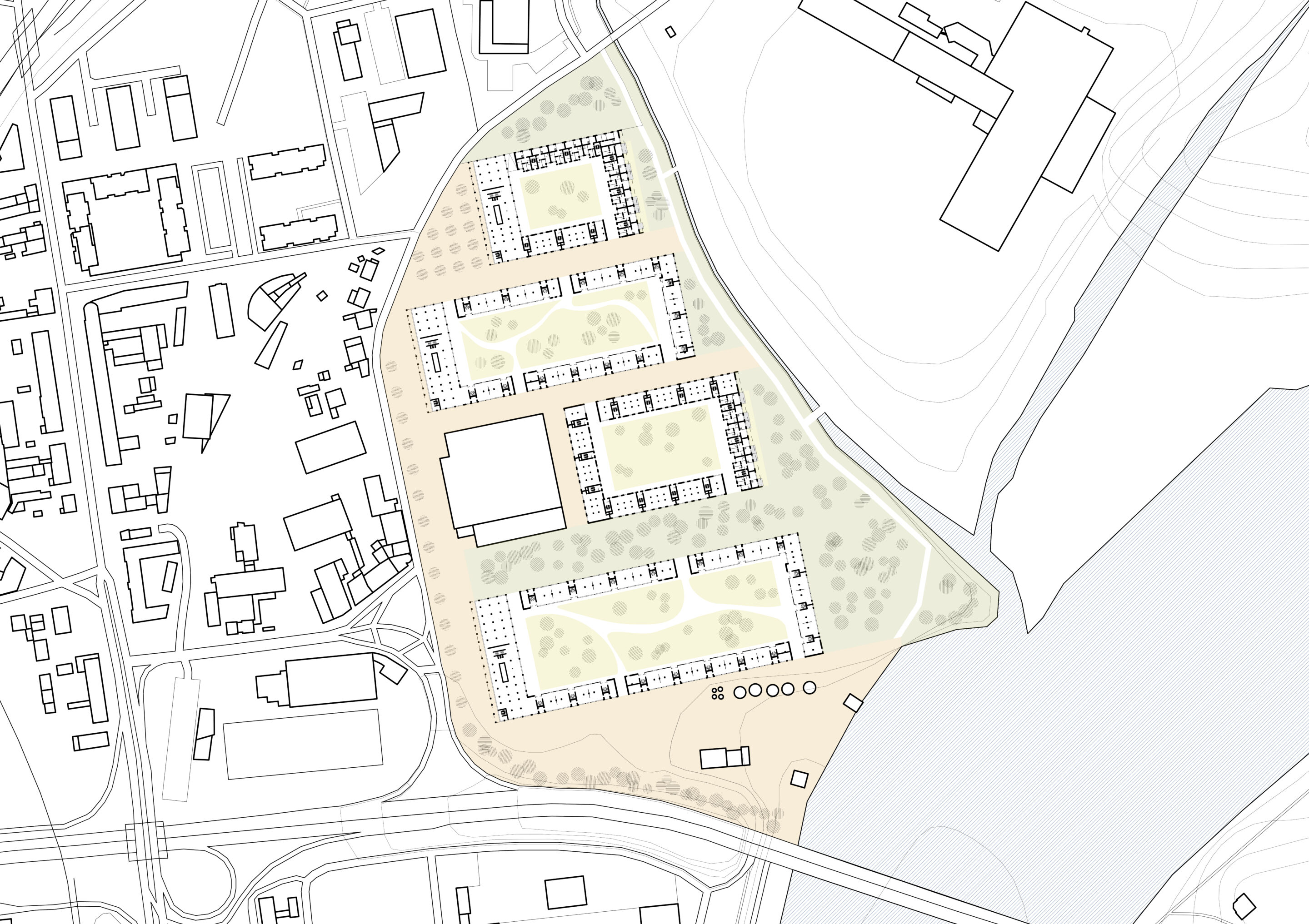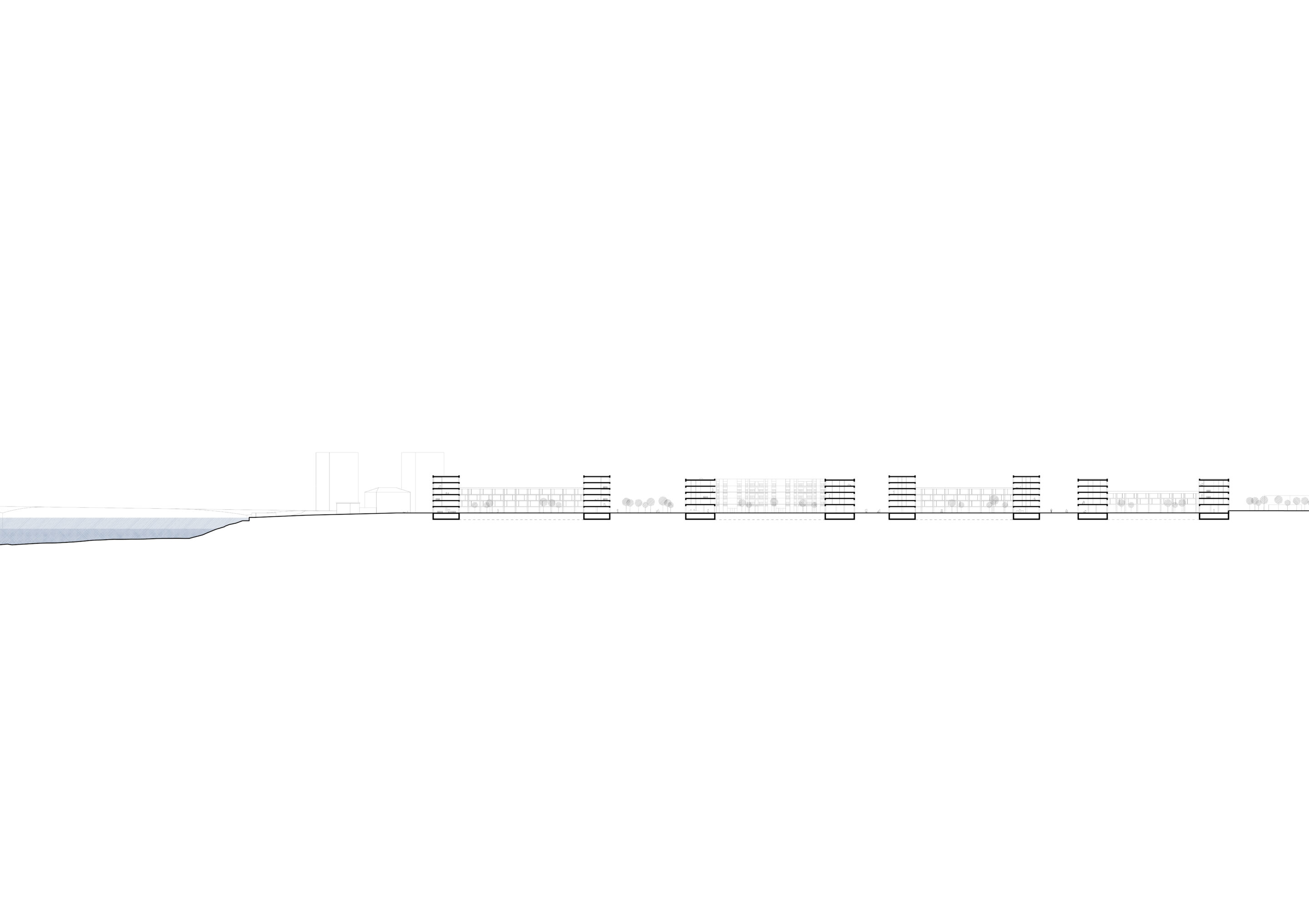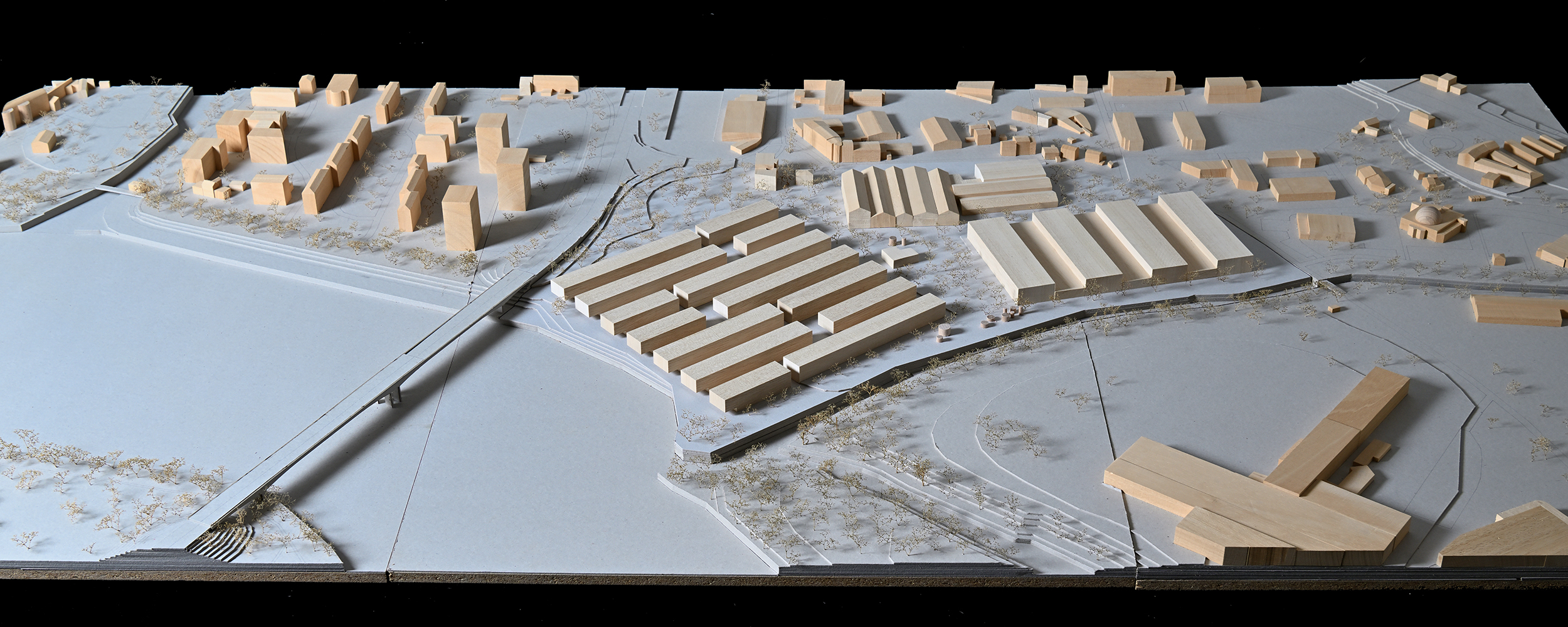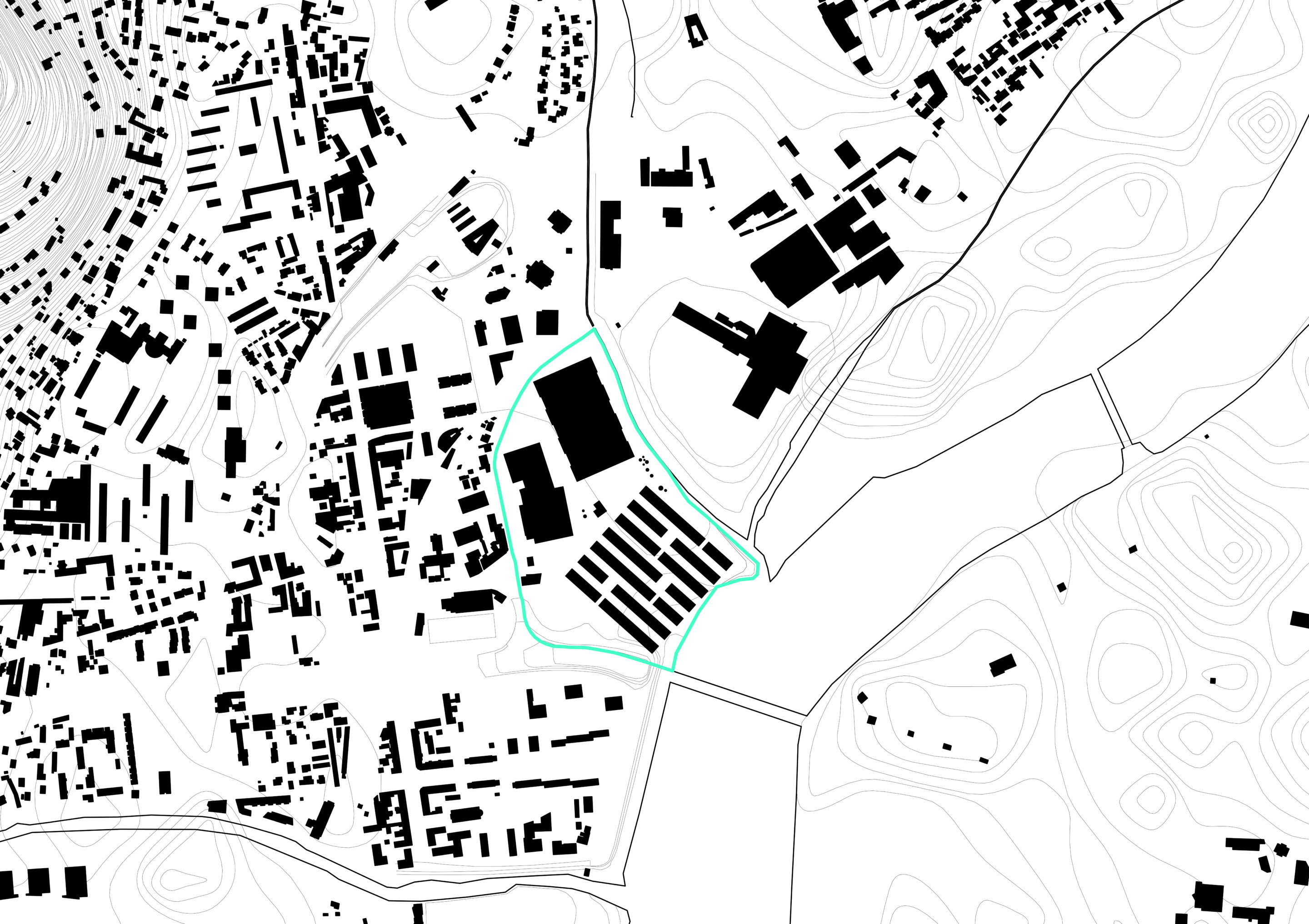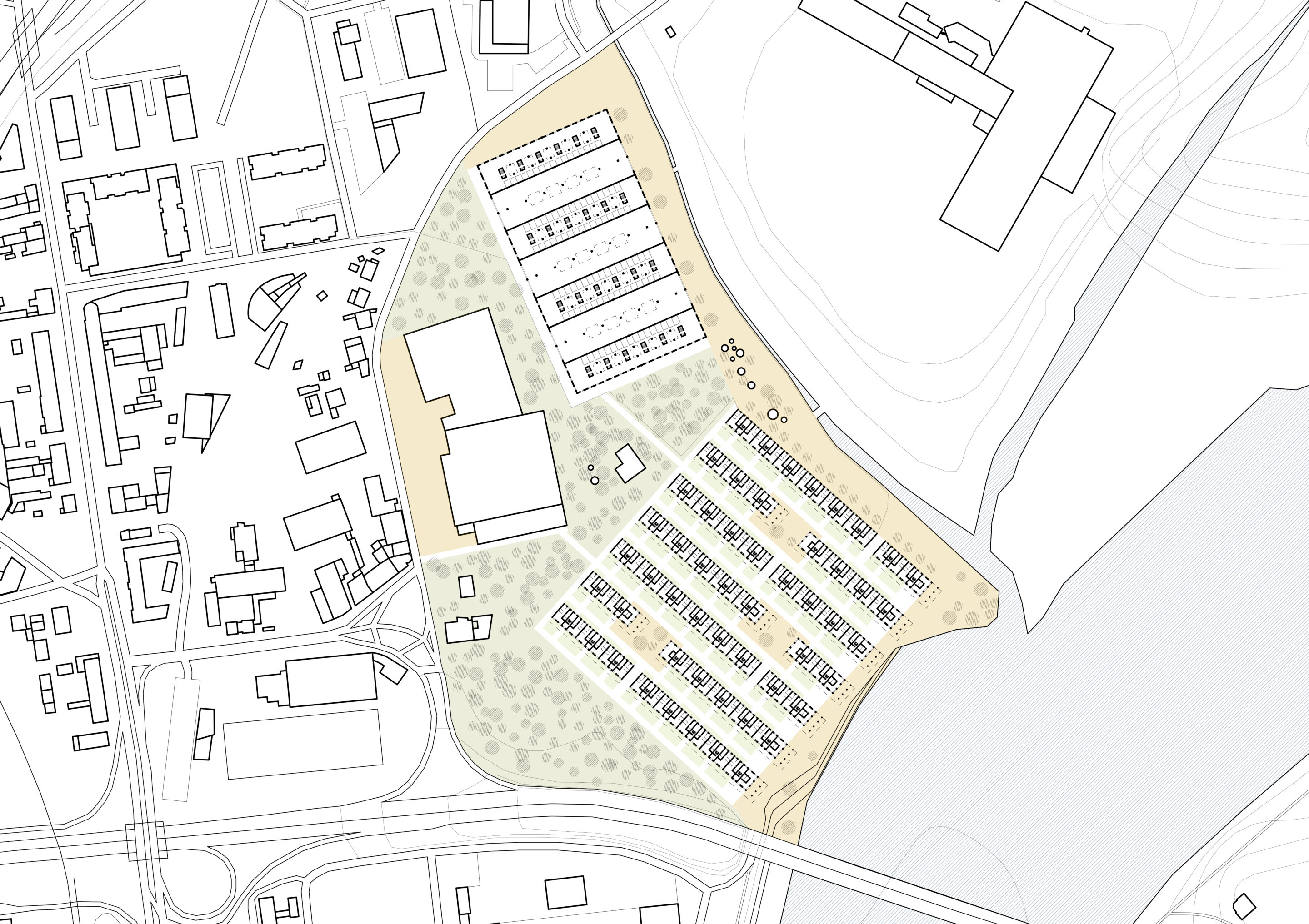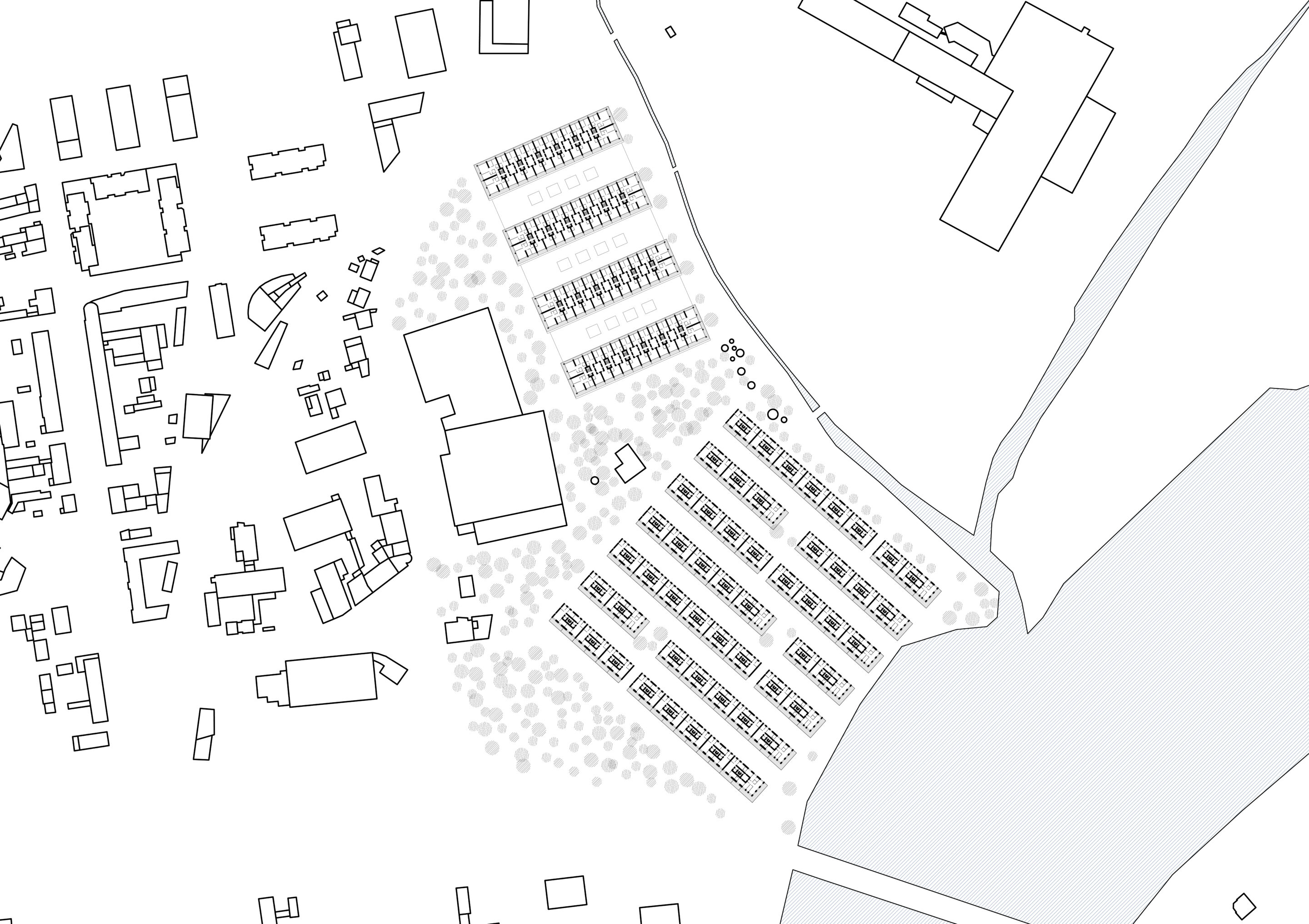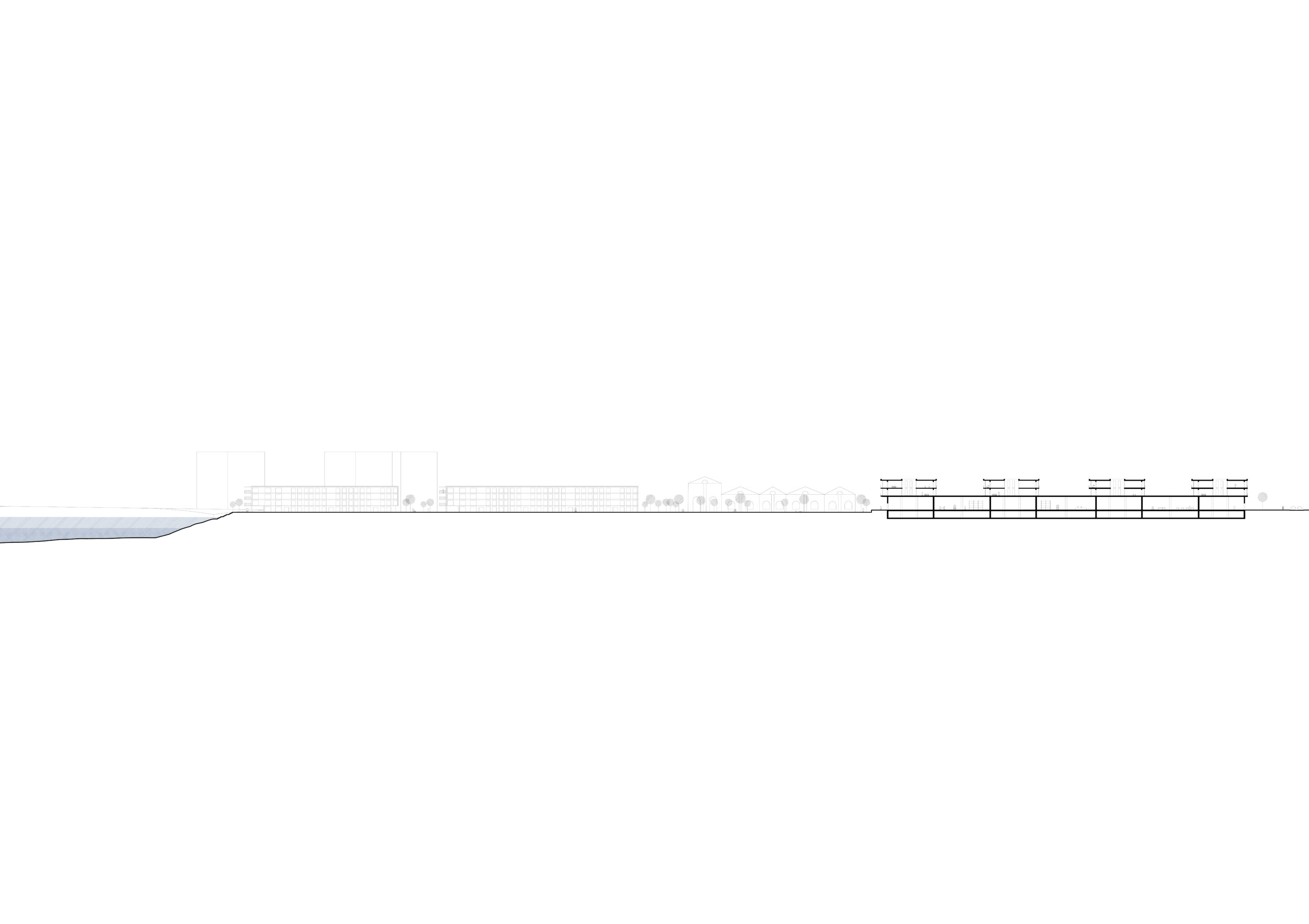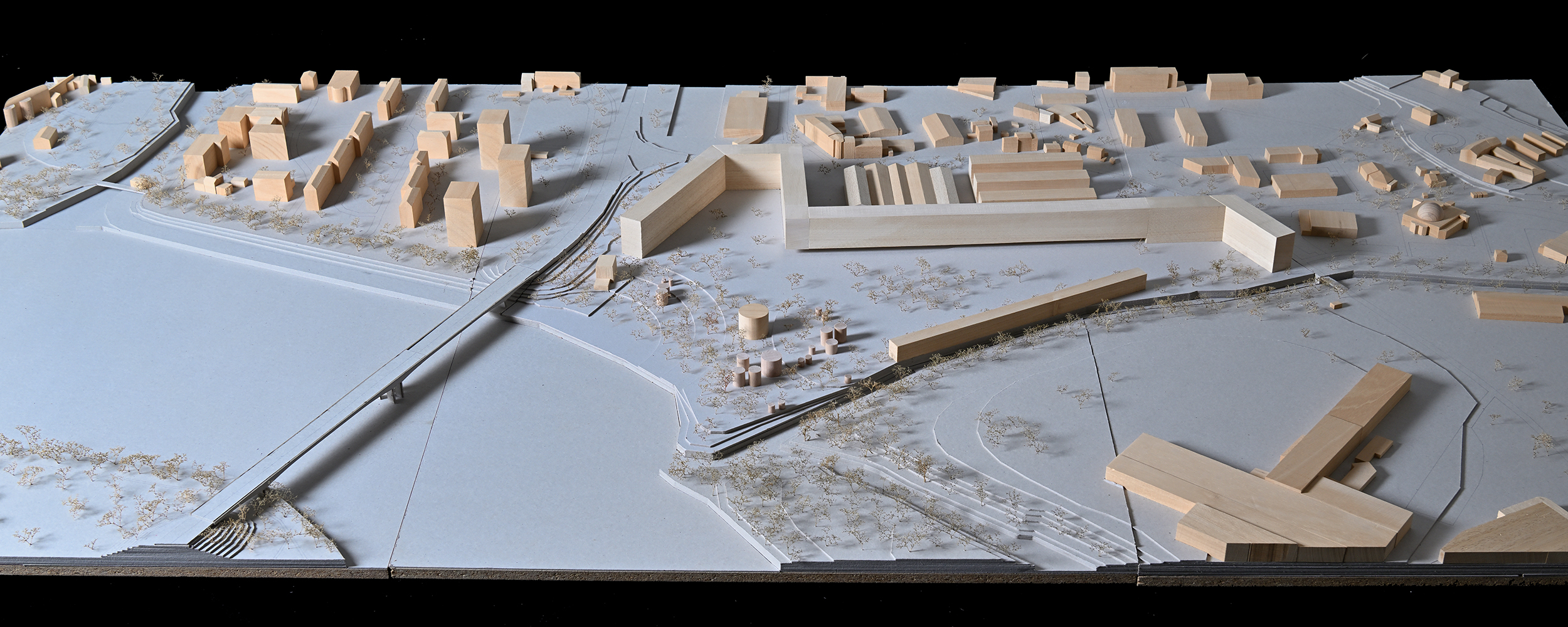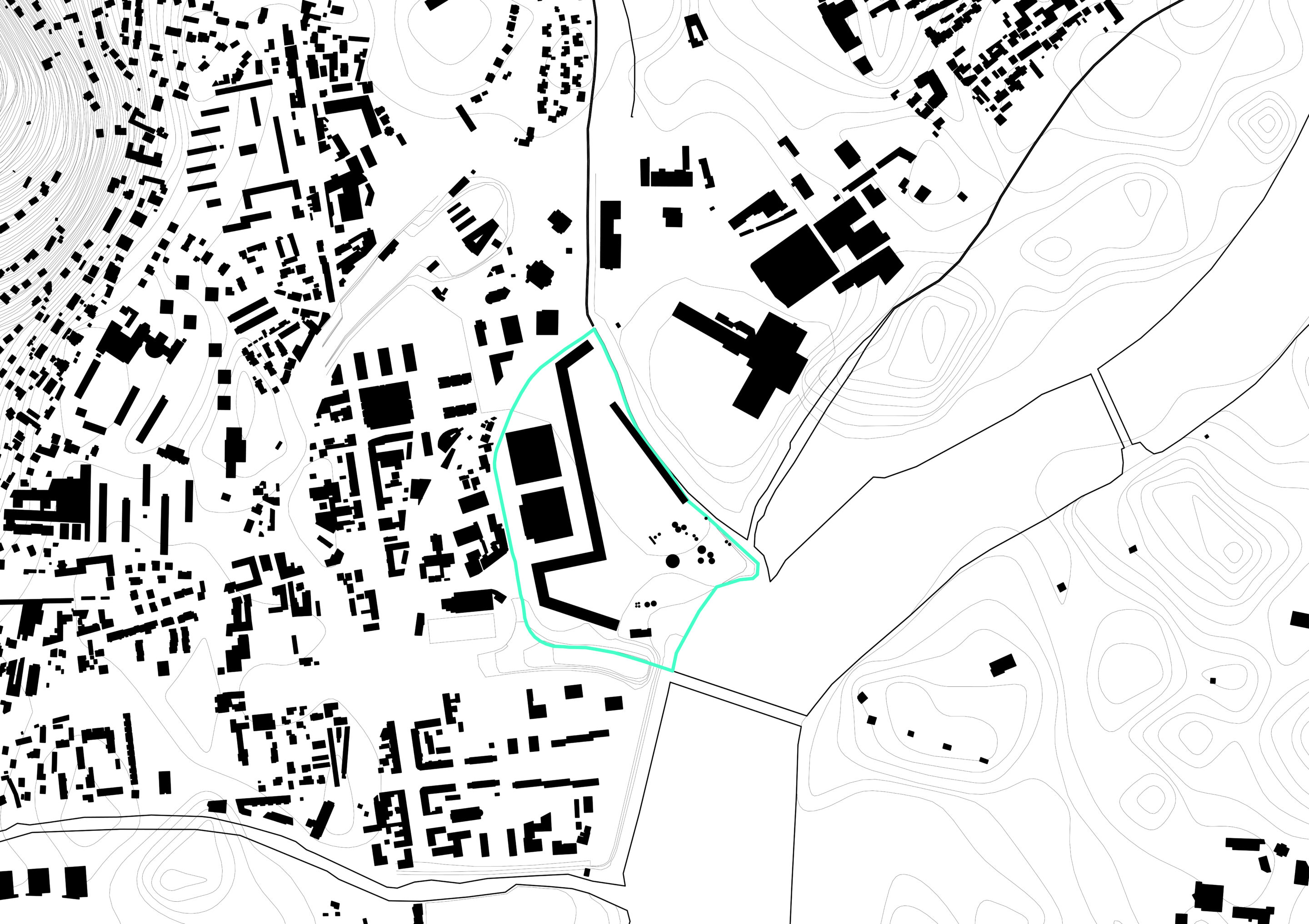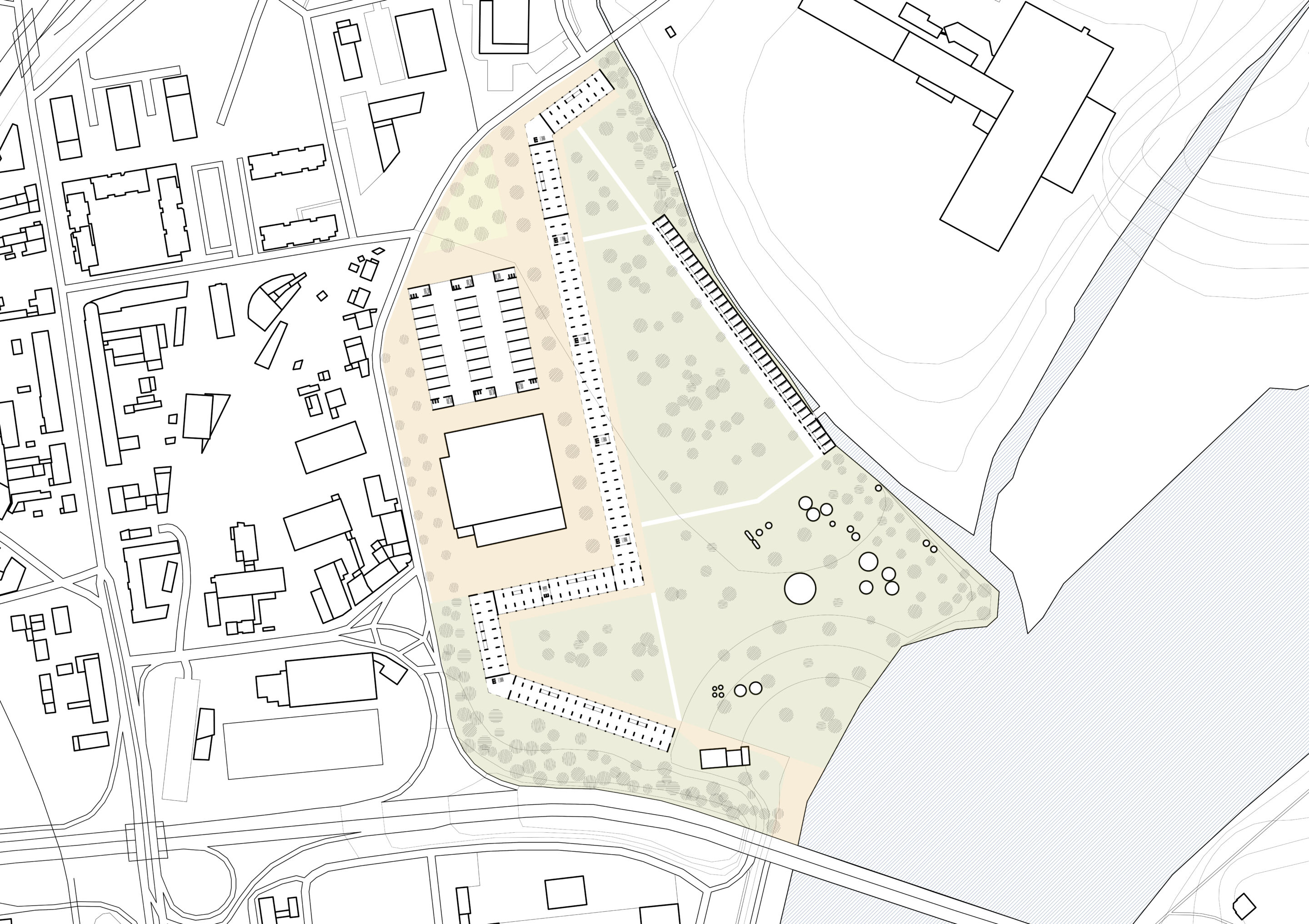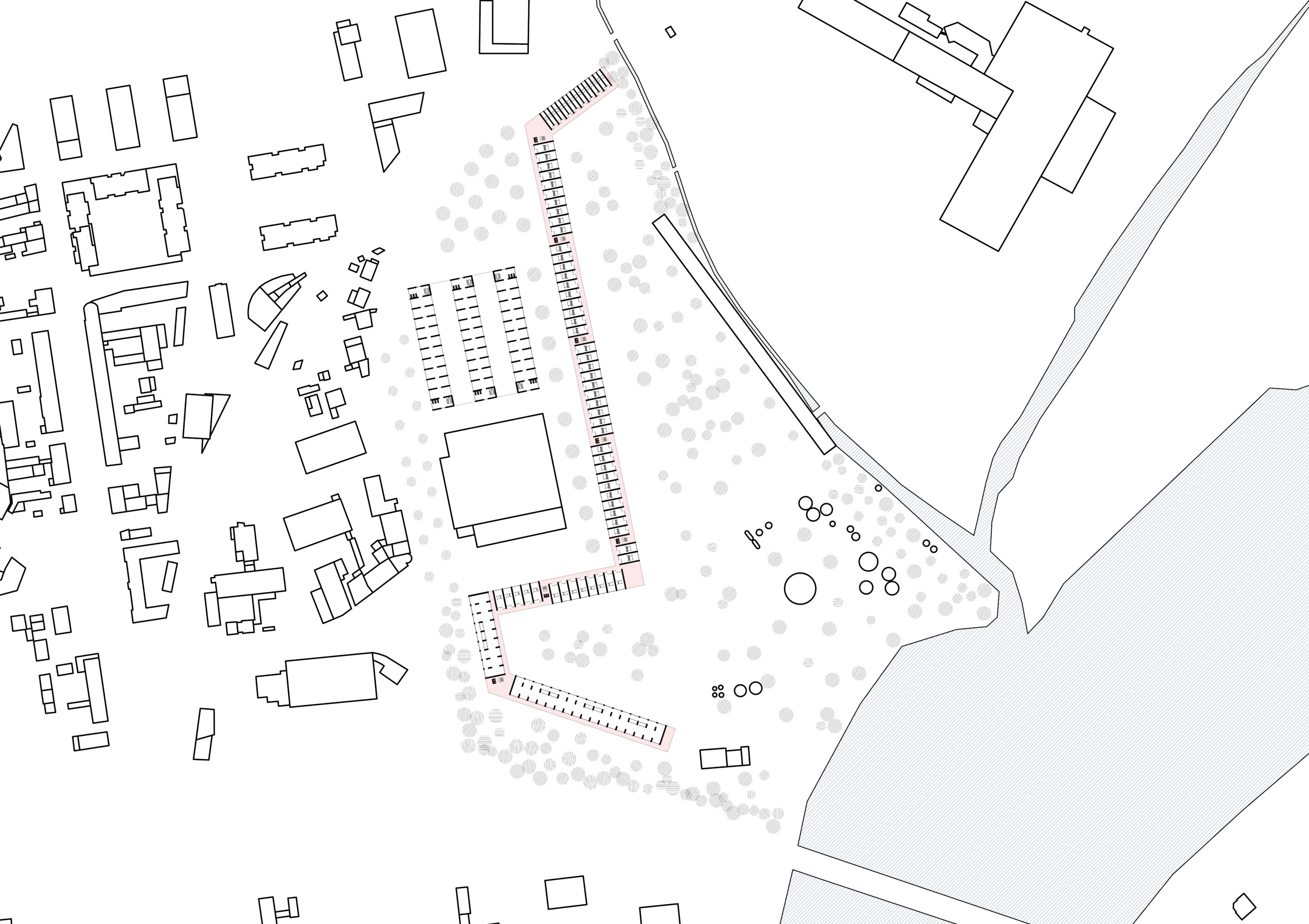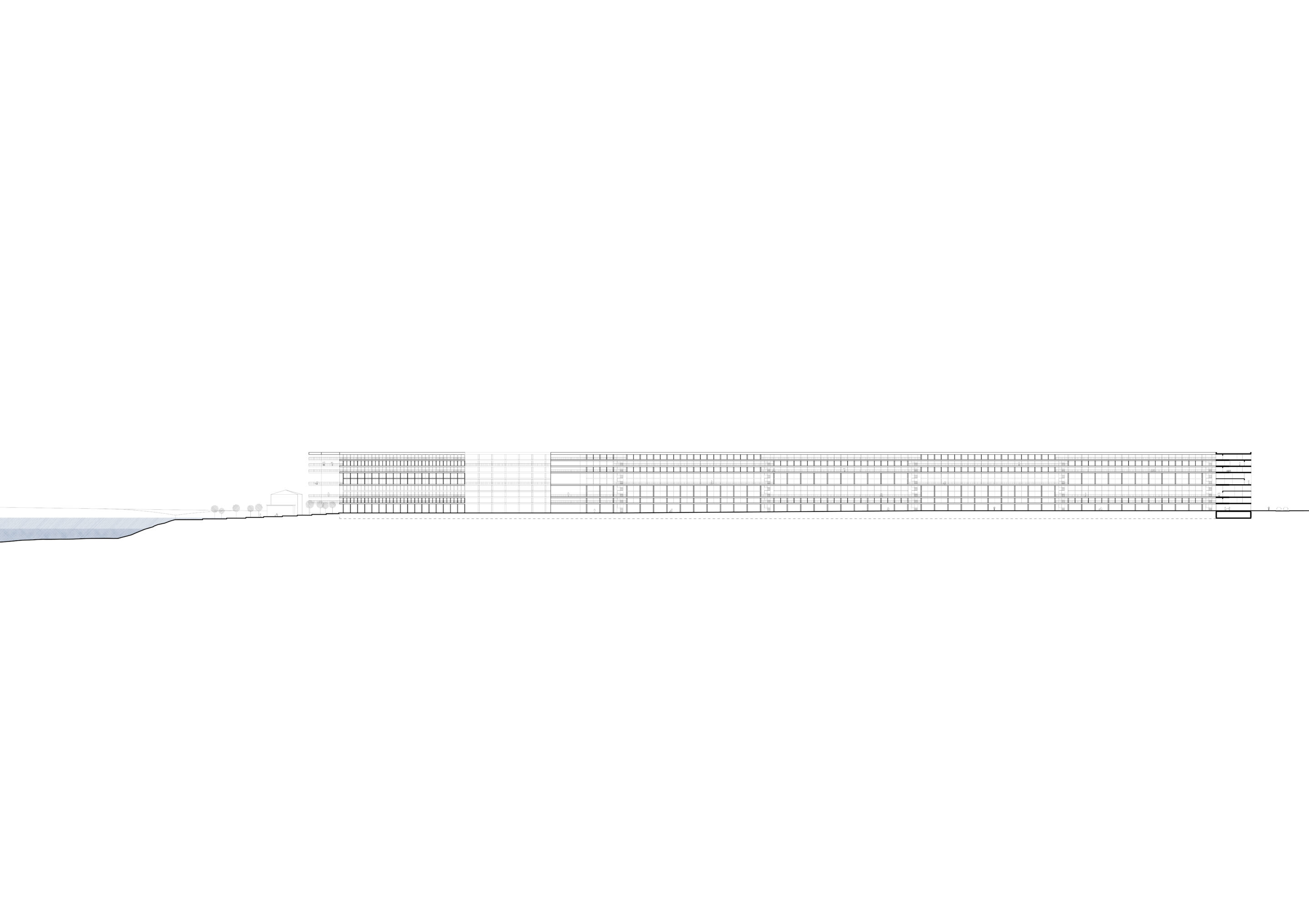Characterized by a heterogeneous and tenuous urban fabric – mostly linked to its oil exploitation – the current situation presents a strong potential for regeneration. Around the Givors-Canal station, a mixed-use urban project under construction is part of this new dynamic and underlines the role of Givors as an important development center in Greater Lyon. Delimited by the Rhône, its tributary the Garon, and the A47 freeway, the identified sector – inaccessible to the public – is characterized simultaneously by strong constraints and genuine landscape qualities. The site shows an assemblage of various built and unbuilt entities arranged on mainly mineral and impermeable soil. The recent landscaping of the ramp between the building and the highway favors the circulation of sustainable mobility from Quai de la Navigation to Rue Honoré Petetin. To the south of the perimeter, the right bank of the river hosts a flooded pier used as a parking lot on its lower level and as a tree-lined promenade and playground on the upper level.
GI0
Academic year 2020-2021
GI1
The project proposes a built fabric that links the scale of the industrial buildings with the scale of the housing developments near the site. The historic industrial building of the Etablissements Prénat, preserved and rehabilitated as an energy research center, determines the footprint of the built morphology: four large permeable blocks are located perpendicular to Rue Honoré Petetin. Each block, held by an urban mall to the east and a public park to the west in connection with the Garon, offers quality green spaces in its heart. The blocks located towards the city are lower than the other blocks, in order to interact with the existing buildings. The first floors are mainly dedicated to activities and shops, while the upper levels accommodate housing. On the river side – where the Via Rhôna leads after skirting the Garon – vestiges of the site’s petroleum past are maintained and enhanced, such as the former administration house of the Canal. Through an urban form that unites the existing city and the new district, this project-based vision requalifies the banks of the Rhône through a spacious fluvial esplanade.
Project based on the work of the following students: Lucile Charamel, Gautier Pierrat
The prospective attitude weaves sequenced links with the river’s landscape space. It translates into an urban form and an urban structure that are part of a logic of extension of the existing built fabric of the city, thus offering a distributed public space.
GI2
The project presents a morphology composed of three large urban pieces, each interacting with different elements of the context. To the south, the first one addresses the Rhône: a series of seven relatively low bars with a high floor ratio, housing duplexes and simplexes, constitutes a contemporary garden city. To the north, the second refers to the Garon: a large artisanal and industrial base surmounted by four bars intended for housing. To the east, the third relates to the existing city: the historic industrial building of the Etablissements Prénat, as well as the adjoining buildings, are preserved and rehabilitated as an energy research center and activity spaces. The public space consists of a continuous bank along the Garon and the Rhône, where steps allow access to the water; a park that penetrates between the built entities and is exposed on the city side; and an urban square in front of the former industrial buildings. Within the public space, vestiges of the site’s petroleum past are maintained and enhanced. Through a built fabric intersecting different programs and morphologies, this project-based vision requalifies the shores of the Rhône through an urban riverbank.
Project based on the work of the following students: Gaspard Marteau, Mikaël Rey
The prospective attitude orients and opens up the built fabric of the existing city towards the river’s landscape space. It results in an urban form that alternates between concentrated built spaces and unbuilt public spaces, thus offering a sequenced public space.
GI3
The project presents two built entities: a long and high articulated building that stretches from the north to the south of the site and an energy research center next to the historic building of the Etablissements Prénat, preserved and rehabilitated as activity spaces. To the east of the elongated shape, a square interacts with the city, while to the west, a public park opening onto the Rhône shelters vestiges of the site’s petroleum past, which have been maintained and enhanced: the former administration house of the Canal, some storage tanks, and the linear infrastructure along the Garon. Mostly on stilts, the ground floors encourage spatial relationships between these two public spaces. The apartments, both simplex and duplex, are distributed by exterior walkways alternating between the east and west sides. Landscaped banks, allowing flooding, slope down to the water with wide steps and requalify the riverbanks. Through a built fabric that includes as much as possible the different programs in a unitary urban gesture, this project-based vision transforms the relationship to the Rhône. The vast fluvial park allows the expression of the river environment in the depth of the site.
Project based on the work of the following students: Diego Alemany, Maxime Hon
The prospective attitude deploys a river frontage that is permeable to the built fabric of the existing city. It translates into a large-scale urban form that enters in dialogue with the larger river’s landscape, thus offering an amplified public space.



